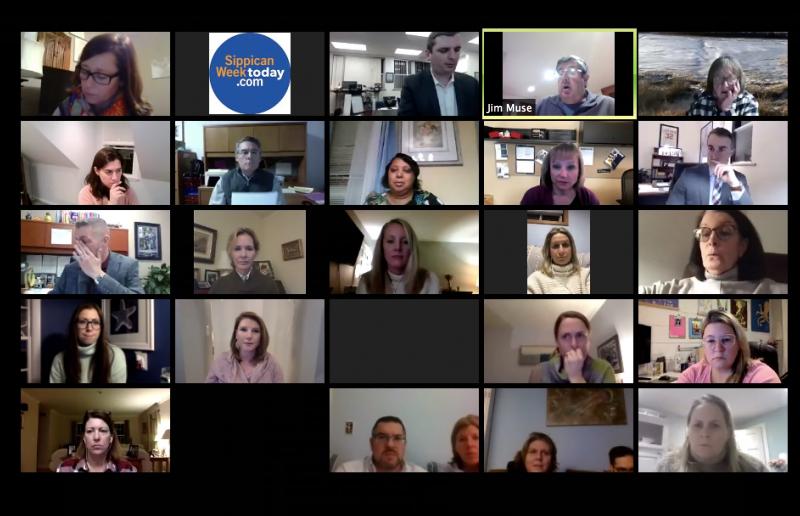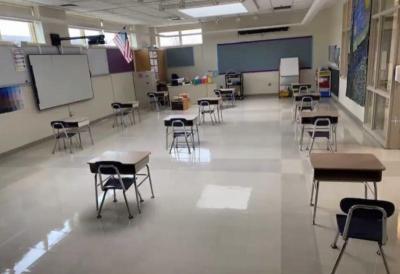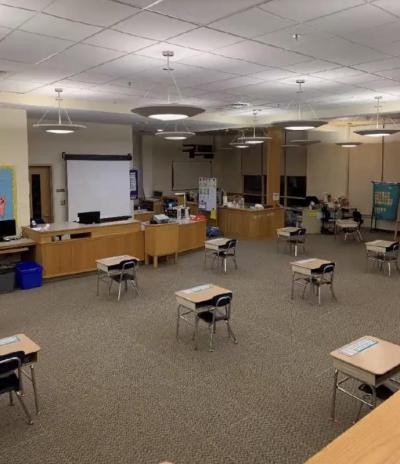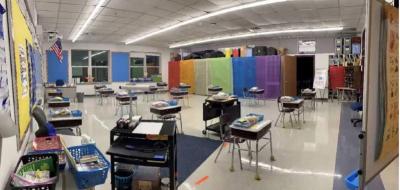Full steam ahead for Mattapoisett K-2 full in-person plan
MATTAPOISETT — Despite comments from parents concerned about a return to in-person school, the Mattapoisett School Committee unanimously decided at a Jan. 11 meeting to move ahead with a plan to bring kindergarten, first and second grade students back to full-time, in-person learning starting Jan. 19.
The plan to return Mattapoisett’s youngest learners to full in-person learning was first unveiled and approved at a Dec. 7 school committee meeting after months of advocacy for a return by a parent coalition called Mattapoisett Concerned.
The plan utilizes large, open spaces at Old Hammondtown School and Center School to accommodate students while maintaining six feet of social distancing. Areas like gyms and libraries will be used to accommodate students.
Remote-only learning is still being offered to families who choose to opt out of the in-person plan. But hybrid learning, the currently used model which spits students’ time between in-person and remote learning, will no longer be available for kindergarten through second grade students. Grades three through six will continue to learn using a hybrid model.
While the Dec. 7 meeting initially approving the plan saw open comments largely in favor of a return to school, the Jan. 11 meeting saw parents in the district raising more concerns than congratulations.
As covid cases continue to rise across the Tri-Town following the holidays, some in the meeting wondered whether this is the time to return students to in-person learning.
“With vaccinations in sight, what’s the rush?” asked parent Benares Angeley, who owns the Children's Art Lab in Mattapoisett.
Angeley noted that an appeal to safety and caution “is not fear mongering. Rather it is a rational response to a worldwide health crisis.”
Other parents were concerned about the inequities returning only some students to in-person learning might cause.
For instance, the in-person plan requires that one remote first grade teacher will be shifted to in-person teaching, leaving all remote learners taught by one math teacher and one reading teacher.
“I feel like this is very insulting to remote families,” said parent Elizabeth Sherry, adding that she and other parents of remote-only first graders did not consent to losing their teacher in order to bring other students back in-person full time.
Inequities that an in-person plan could cause for the schools’ older students were brought up, too.
Parent Todd Philie read a letter he and other Mattapoisett parents wrote expressing some concerns about the return to in-person learning.
“While we agree that K-2 are the most vulnerable learners in terms of literacy, we are uneasy that the changes made to accommodate these students are having a negative impact on grades 3-6,” read the letter.
The letter, which criticized the School Committee’s decision to adopt the plan in the same Dec. 7 meeting it was unveiled, also brought up concerns about safety and communication.
The letter called for answers on the exact metrics used to justify the in-person return, as well as what metrics will be used to return third through sixth graders to in-person school.
Similar metrics were continuously requested by Mattapoisett Concerned prior to the unveiling of the in-person plan.
Mattapoisett Public Health Nurse Emily Field worked to explain the data points that led her and the Board of Health to believe that an in-person return is safe.
She noted that while multiple metrics and variables were used to determine the plan’s safety, the data show that transmission isn’t a huge risk for young learners.
“The transmission of covid doesn’t reflect in the school setting for K-through-two,” said Field.
School committee member Carly Lavin brought up that despite data showing less transmission of the virus in young students within schools, young people in the newborn to 19 age group are contracting the virus more than ever.
But Field noted that the spike in cases in that age group isn’t among younger children.
“That is not the elementary school age, that is the social age of teenagers,” she said.
While most comments brought up concerns about the return, others applauded the plan and the effort to bring students back to in-person school.
“This is a true win for our town and our students,” said parent Eileen Newell.
Newell is also a teacher at another district, where she said she teaches 21 five- and six-year-olds completely remotely. She added that it’s a luxury for Mattapoisett to be able to offer full in-person learning, with six feet of social distance, to students.
Teachers from Mattapoisett said they’re ready to bring students back, too.
“The teachers of the youngest learners are ready to proceed with the in-person plan,” said teacher’s union representative Marissa Hughes.
Sixth grade teacher and third grade parent Sara Jacobson said that even though her child and students won’t be back to full in-person learning, sometimes sacrificing individual benefits is for the overall good of the community.
“Somebody else getting the vaccine is still good for me in a community,” said Jacobson.
The committee voted unanimously to begin full-in person school on Jan. 19, with the caveat that the plan is subject to change if students’ health and safety are put at risk. Exact thresholds for what might cause the schools to pivot back to a hybrid or remote-only model are unclear, but transportation and equity issues, as well as in-school transmission, will be monitored.

















